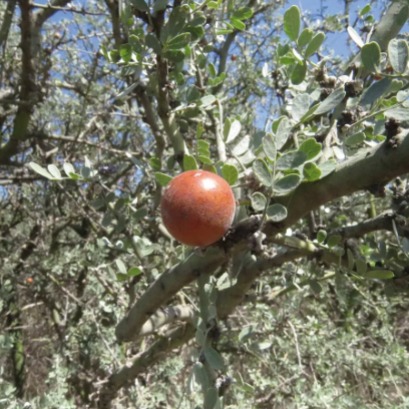
The South America tree that is considered the strongest in the world and grows in desert zone
This South American tree is one of the strongest in the world and its fruit gives you many health benefits
The vegetation of South America is not only wide, but is also beautiful. There is a tree that is calling attention worldwide, since it is not only considered the strongest in the world, but also grows in the desert. What a tree in South America stands out for being the strongest in the world? It is the chaņar, which usually grows with abundance in desert areas, resists extreme temperatures and provides seeds and fruits that are edible. It grows in desert areas, and this leads to adapt to hard climatic conditions. This species receives little water, supports strong winds and survives even at extreme temperatures. For example, it has been shown that this species supports days of more than 40ēC, as well as cold nights, where the thermometer descends to -13ēC. Nature is wise, and that is why the chaņar has branches full of thorns. Therefore, these trees can prevent certain animals from damaging it. The chaņar grows in six countries in South America: Argentina, Chile, Bolivia, Paraguay, Uruguay and Peru. What benefits does the fruit of the chaņar provide? The chaņar has edible fruits and seeds, which can provide many benefits to our health. For example, in some villages, the fruit of the chaņar is performed, which is used to overcome from a simple cold to bronchitis or a lung problem. To perform a branch you have to clean the fruits well and give a boil to soften the peel. Remove the peel and put the fruit again in the soft heat. You will have to stir from time to time so that it does not stick. The chaņar will release a kind of ink, and at this point you have to remove the fruit of the fire. Then, it is advisable to grind the fruit in a mortar. Strain the pasta with a fine canvas or tulle along with the water with which the fruit was boiled. Put the liquid obtained from the cast over low heat, stirring constantly. When he has taken a thread point and has a brown color, he must remove from heat, and then package.
IT MAY INTEREST YOU
 Experts cant believe it, but this tree is the oldest in the world and continues to bear fruit: it is 4,000 years old.
Experts cant believe it, but this tree is the oldest in the world and continues to bear fruit: it is 4,000 years old.
Nature keeps secrets that defy the passage of time, and one of the most surprising examples is a tree that, approximately 4,000 years old, continues to bear fruit today. This specimen has become a symbol of resistance and longevity, capable of surviving climate changes, landscape transformations and human activity itself.
 The second largest wetland in South America is located in Argentina: what is it?
The second largest wetland in South America is located in Argentina: what is it?
Argentina has national parks that place it in a unique position within South America, competing with 300 others. Which is the largest? South America is home to more than 300 national parks, but many go unnoticed. There are extensive wetlands that have been the subject of major ecological restoration projects, to coastal mountains with deep indigenous heritage. Today we tell you the case of one located in Argentina.
 They promote research in pine resins from the NEA
They promote research in pine resins from the NEA
The forestry industry is one of the most important sectors in the economies of Misiones and Corrientes. Thousands of hectares of pine supply the paper, pulp, boards and sawmill industry. Pinus elliottii, one of the species established in the region, in addition to providing wood, is used to produce resin, a non-wood forest product with high demand in the chemical, pharmaceutical and cosmetic industries. In 2\024, resin extraction of approximately 52,6\0\0 tons was achieved from approximately 18,\0\0\0,\0\0\0 trees in production, generating income and jobs with high expansion potential.





















